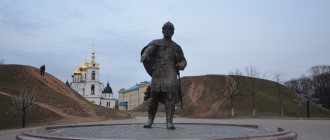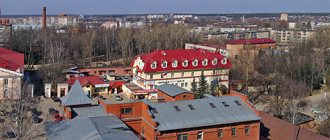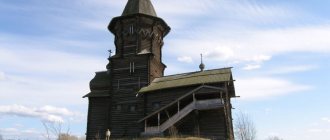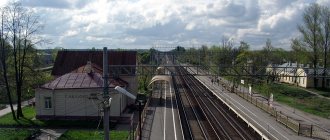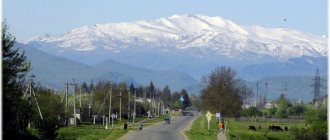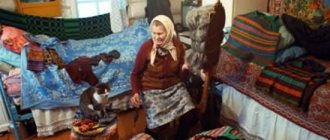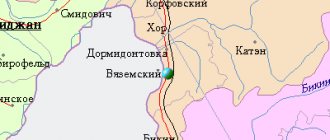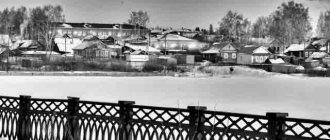M16-Real Estate specialists assessed the Pushkinsky district as a place to live and prepared a detailed review, as well as top properties on the primary and secondary market. Find out the pros and cons of the location, which part of the Pushkinsky district has the most new buildings and where is the best place to buy an apartment.
A few words about real estate in the area
Pushkinsky district is the dream of romantics and aesthetes. Living next to palaces and museum-reserves, with a history dating back to the times of the emergence of St. Petersburg, attracts many sensitive natures.
There are a large number of cottages here - from comfortable to luxury. There are also apartments, the segment is the same. The closer to Tsarskoye Selo or Pavlovsky Park, the higher the price.
The proximity of palace and park ensembles influences the pricing of the Pushkinsky district
However, the Pushkinsky district is not limited to the poetic Pushkin and Pavlovsk, where prices are quite steep. Recently, there has been active development of Shushar and the Tsarskoye Selo Hills area, and this is already a mass market segment.
The supply of the primary market in the area is formed precisely by new blocks in the mass market segment; in Pushkin itself there are very few new buildings.
Tsarskoye Selo Pushkinsky district of St. Petersburg
The settlement was first mentioned in 1501; it was then part of the Nikolsko-Izhora churchyard. Later, the settlement was captured by the Swedes and was under their control from 1609 to 1702, until it was recaptured by Peter I. Peter gave these lands to Prince Menshikov, and he gave them to his bride in 1712. This year is considered the year of Pushkin's founding.
Then a two-story stone palace was built here, around which a settlement was formed from the houses of palace employees. Now the museum-reserve includes the following park complexes: Ekaterininsky, Aleksandrovsky and Babolovsky with parks, palaces and pavilions.
List of attractions
Catherine Park
The main Pushkin park was designed by the best masters of landscape gardening on the orders of Catherine I. Subsequently, the residence became one of the favorite vacation spots of the imperial family. In addition to the famous Catherine Palace, there are many interesting things to see in the alleys: elegant Baroque pavilions, the Admiralty complex, memorial monuments in honor of victories in the Russian-Turkish wars, sculptures, neo-Gothic buildings, unusual bridges, observation platforms, alleys and canals. Entrance is paid and costs 150 rubles; the price does not include a visit to the palace. A card will be issued along with the ticket.
Grand Catherine Palace
The majestic Baroque palace was built according to Rastrelli's design. Both the façade and the interiors are richly decorated, including the famous Amber Room, which took six tons of amber to create. The residence was the favorite place of three empresses: Catherine I, Elizaveta Petrovna and Catherine II.
After the revolution, the palace faced a difficult fate: at first, many valuables were sold, and during the war, most of the interiors were destroyed. Among other things, the Amber Room was stolen, the location of which still remains unknown. Now the palace has been completely restored and brought back to its original appearance, the Amber Room has been recreated. Entrance is 700 rubles, it is better to go with a guided tour.
Address: Sadovaya st., 7
Hermitage Pavilion
The pavilion was created specifically for Elizabeth Petrovna, and it was here that the empress received people close to her. “Hermitage” means “hermit’s hut” and, like the pavilion of the same name in Peterhof, serves as a place of solitude and meetings with selected guests. The baroque ornate façade resembles a smaller version of the Winter Palace, and indeed, the same architect, Rastrelli, worked on it.
Inside, the pavilion was equipped with a special mechanism: when receiving guests for a feast, the tables were raised from under the floor, and after dinner they were lowered back and made room for dancing. The mechanism is still demonstrated as part of the excursion.
Cameron Gallery
The Cameron Gallery is a two-story complex ensemble, which includes a gallery, a ramp, a Hanging Garden and Cold Baths. It was built according to ancient models in the 18th century, and on the second floor there are busts of philosophers and emperors of the Ancient World, whose works influenced Catherine 2. The Hanging Garden, where fruit trees and flowers grew, has also been preserved - one of the oldest in Russia. Later, a ramp was also built, since the empress did not like stairs.
Hermitage kitchen
The neo-Gothic kitchen was built by order of Catherine II and served as a place for receiving guests and an additional entrance to the park. The unplastered brick walls are reminiscent of Gothic buildings in England, and the simple but elegant decor of the facade already belongs to the elements of classicism. Now there is a restaurant of the same name inside.
Tower Ruin
The unusual structure was conceived as a semblance of a Turkish fortress left in ruins. The tower is one of many memorial monuments dedicated to victories in the Russian-Turkish wars. There are similar ruins in Orlovsky Park in Strelna and in Tsaritsyno, all of them were built at the same time, when there was a fashion for such aesthetics. Artificial cracks and ruins were created, which created certain difficulties during restoration - after all, it is necessary to repair the building, but preserve the appearance of ruins.
You can climb the tower; from the observation deck you will have a view of the park. Free admission.
Turkish bath
The Turkish bath was also created in memory of the victory in the Russian-Turkish War of 1829, and the hammam bath in Adrianaple was taken as a model. Interior details were brought as trophies from this Turkish city. From the outside, the bathhouse resembles a mosque with a minaret, and inside there were niches with water of different temperatures. The ornate Moorish-style interior was restored during the restoration, so it's definitely worth stopping by. Entrance to the pavilion is purchased separately.
Admiralty
On the shore of the Big Pond is the Admiralty complex, where imperial ships formerly stood. The collection of sailing and rowing vessels was collected from different countries, including gondolas, trashcoats, caiques and pirogues. The collection was lost during the war, but the architectural complex of the Admiralty was partially preserved and was restored. The neo-Gothic red brick buildings are reminiscent of European castles with crenellated parapets, spiers and distinctive window shapes. Now there is a restaurant here.
Gothic gate
The cast iron Gothic gates are modeled after English Gothic. At the time of its creation, it was a unique cast-iron foundry work: few places in the world could cast such large-scale projects, because the weight of the gate was 30 tons. The supports feature female figures, and the columns are connected by a graceful arch.
Chesme Column
The memorial monument is dedicated to the victory in the Russian-Turkish war in 1774. The rostral column designed by Rinaldi also resembles the pillar in Rome, erected in honor of the victory over Carthage. The eagle symbolizes triumph, and the pond symbolizes Chesma Bay, where the battle took place. The column is connected by a tunnel to the ruined tower.
Alexandrovsky Park
Like Catherine Park, Alexander Park is named after the ruler for whom it was created. Alexander I designed the park for himself and personally monitored the progress of the work. The result was a landscaped English park with many curious structures, pavilions and architectural whims. Free admission.
Alexander Palace
The main attraction of the park is the majestic Alexander Palace. Initially it was called New Tsarskoye Selo and was built specifically for the wedding of Alexander I according to Quarenghi’s design. This is a classic palace in a classical style in the form of a semi-rotunda with two side wings and elaborate rich interiors.
Alexander I and all subsequent emperors preferred other palaces, with the exception of Nicholas II, who loved the Alexander Palace. Guests were received here and the 300th anniversary of the Romanov dynasty was celebrated. Later, it was here that the family of Nicholas II was arrested, after which they were sent into exile.
During World War II, Pushkin was occupied. The palace was occupied by German troops, and a cemetery was located in the adjacent territory.
For a long time the palace was dilapidated, but recently it was completely restored. Recreated interiors are now available to visitors: 13 halls, including the apartments of Nicholas II and Alexandra Feodorovna.
Address: Palace street, 2
Chinese village
The park has a very unusual complex of buildings - the Chinese Village. Construction of the village began under Catherine II and became a tribute to the fashion for Chinese architecture and art that spread throughout Europe. It is noteworthy that the initial designs were recreated from engravings. In the 19th century, Chinese pagodas were rented out as apartments; for some time Karamzin lived in one of the houses. Some of them are still rented out. In addition to the pagodas, the Dragon Bridge and the Great Chinese Bridge are also interesting.
Pushkin parks are truly unique from an architectural point of view. They reflect several fashion trends at once: neo-Gothic semi-ruined towers or Chinese pagodas.
Transport accessibility of the Pushkinsky district
- It is best to get here along the Kievskoye or Pulkovskoye highway or along the Rossiya highway. But during peak hours they are often overloaded. Therefore, traffic jams often form here.
- Local residents can easily and quickly reach St. Petersburg from the Detskoe Selo railway station to the Vitebsky station located right in the city center.
- From the Zvezdnaya, Kupchino or Moskovskaya metro stations you can get to Pushkin in a quarter of an hour by public transport or by minibus.
Population
| Population | ||||||
| 2002[2] | 2009[3] | 2010[4] | 2012[5] | 2013[6] | 2014[7] | 2015[8] |
| 101 655 | ↗122 796 | ↗135 973 | ↗139 597 | ↗150 316 | ↗165 151 | ↗171 593 |
| 2016[1] | ||||||
| ↗178 584 | ||||||
ImageSize = width:380 height:300 PlotArea = left:50 right:40 top:20 bottom:20 TimeAxis = orientation:vertical AlignBars = justify Colors =
id:gray1 value:gray(0.9)
DateFormat = yyyy Period = from:0 till:178584 ScaleMajor = unit:year increment:85000 start:0 gridcolor:gray1 PlotData =
bar:2002 color:gray1 width:1 from:0 till:101655 width:15 text:101 655 textcolor:red fontsize:8px bar:2009 color:gray1 width:1 from:0 till:122796 width:15 text:122 796 textcolor:red fontsize:8px bar:2010 color:gray1 width:1 from:0 till:135973 width:15 text:135 973 textcolor:red fontsize:8px bar:2012 color:gray1 width:1 from:0 till:139597 width :15 text:139 597 textcolor:red fontsize:8px bar:2013 color:gray1 width:1 from:0 till:150316 width:15 text:150 316 textcolor:red fontsize:8px bar:2014 color:gray1 width:1 from :0 till:165151 width:15 text:165 151 textcolor:red fontsize:8px bar:2015 color:gray1 width:1 from:0 till:171593 width:15 text:171 593 textcolor:red fontsize:8px bar:2016 color :gray1 width:1 from:0 till:178584 width:15 text:178 584 textcolor:red fontsize:8px
Where to go in Pushkinsky district
The main local attraction is the world-famous Tsarskoe Selo, where the Alexander Palace is located with a huge collection of personal belongings of the last emperor and his wife. But until 2022 it is closed for reconstruction.
No less interesting is the Catherine Palace with its golden enfilade, stunningly beautiful Main Hall, luxurious grand staircase and the mysterious Amber Room. You should also definitely visit the Tsarskoye Selo Lyceum, where the poet Pushkin received his education and other important places.
In the Pushkinsky district of St. Petersburg there is a huge area of green space. There are 6 largest and most luxurious parks in Pushkin: Alexandrovsky; Babolovsky; Buffer; Ekaterininsky; Lyceum; Separate. Tourists definitely need to visit the oldest temple of Pushkin - the Church of the Sign, dating back to the reign of Elizabeth.
Links
Municipal districts Avtovo | Admiralty | Academic | Apothecary Island | Balkan | Bolshaya Okhta | Vasilievsky | Vvedensky | Vladimirsky | Volkovskoe | Harbor | Gagarinskoe | Georgievsky | Gorelovo | Citizen | Dachnoe | Palace | Ekateringofsky | Star | Ivanovsky | Izmailovskoe | Knyazhevo | Kolomna | Kolomyagi | Commandant's airfield | Konstantinovskoe | Little Red River | Kronverkskoe | Kupchino | Lakhta-Olgino | Ligovka-Yamskaya | Foundry | Malaya Okhta | Sea Gate | Moscow outpost | Narvsky | Folk | Nevskaya Zastava | Nevsky | Novoizmailovskoe | Obukhovsky | Lake Long | Okkervil | Marine | Petrovsky | Decembrist Island | Parnassus | Piskarevka | Polustrovo | Powder | Posadsky | Pravoberezhny | Prometheus | Pulkovo meridian | Rzhevka | Rybatskoye | Sampsonievskoe | Svetlanovskoe | Northern | Semyonovsky | Haymarket | Smolninskoe | Sosnovaya Polyana | Sosnovskoe | Ulyanka | Uritsk | Finnish | Black River | Chkalovskoe | Shuvalovo-Ozerki | Southwest | South Primorsky | Yuntolovo | No. 7 | No. 15 | No. 21 | No. 54 | No. 65 | No. 72 | No. 75 | No. 78 Cities Zelenogorsk | Kolpino | Krasnoye Selo | Kronstadt | Lomonosov | Pavlovsk | Peterhof | Pushkin | Sestroretsk Villages Alexandrovskaya | Beloostrov | Komarovo | Levashovo | Fox Nose | Metallostroy | Youth | Pargolovo | Sand | Petro-Slavyanka | Pontoon | Repino | Sapperny | Serovo | Smolyachkovo | Sunny | Strelna | Tyarlevo | Ust-Izhora | Ushkovo | Shushary
